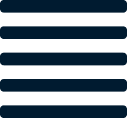Overwhelmed by the world of inventory planning? The key to easily forecasting demand is a buttoned up process that can be repeated at specific time periods. Below is a simplified 4-step demand planning approach followed by many fast-growing brands.

#1: Import data
The first step in building a forecast is starting with a solid foundation. You’ll want to pull both quantitative and qualitative data tied to your business. This includes:
- Sales
- Inventory
- Marketing activity
- Sales or other promotions
#2: Apply insights to create an initial forecast
Once you have preliminary data, you have history that can be analyzed to create an initial forecast. You should understand performance on an individual product basis, but also on a category, attribute and price basis.
Do certain colors or textures follow a pattern? Or perhaps certain product categories drive the bulk of your sales? You should aim to understand how products and categories behave both individually as well as in relation to one another. These trends will form a norm for you to later assess against.
When analyzing product relationships, look for insights on:
- Cannibalization - sales that “eat” the sales of another item. For example if a single white shirt contributes 25% of your sales, and you find that when introducing a new product they both contribute 25% of your sales, then you have a case of product cannibalization. Put simply, this is when the introduction of one item decreases the performance of another.
- Substitution - when one product replaces another in demand. This is similar to cannibalization, except that substitution typically carries forward trends of a depleting item to that of a new replacement.
- Attachment - how the demand of one item affects that of another. For example if you typically sell 1 hair mask for every 4 shampoo bottles, then you have an attachment rate of 4:1. This helps you quantify you can expect 4 shampoo sales for every hair mask in a given time period.
When analyzing history, be sure to account for variations in performance due to the introduction of new products, seasonality, and available inventory (ATS).
Through this process of analyzing history you’ll form a bottoms-up forecast. This will serve as your foundation to be molded by the factors in the next step.
#3: Align business decisions and product strategy
Inventory planning, while predominately a data driven function, affects many parts of the business. And so, with forecasting you must apply both data driven insights as well as business decisions and product strategies to create a well-rounded forecast. You should consider the following factors and make adjustments to your plan as needed:

- Margin (profitability) - to optimize your inventory investment, you should have a target for how much you expect as a return (GMROI). The business as a whole will also likely have an idea of how much profitability is needed. Both should be in sync so that you are not only forecasting to meet the consumer demand, but you are doing so at a cost and return that satisfies financial goals.
- Pricing - similarly, pricing should be used as a strategy to optimize profitability. If there is strong demand for a product but it has a weak return, you should consider what pricing strategies can be put in place to satisfy both the customer and the financial needs.
- Products - there are a handful of reasons to introduce new products, and depending on which team you’re talking to, the reason will vary. When it comes to planning, the purpose of new products should be to satisfy the financial goals. Meaning, it can be afforded with the budget and it can contribute to the total business. If you’re given a sales target, you can apply the bottoms-up approach to know what your current assortment will drive, and the remaining gap can be filled in with new products. This is part of the tops-down approach.
- Supply chain capabilities - it isn't enough to know that a sales gap can be filled in with new products. It has to be possible to execute as well. This leads us to the supply chain. You might find there are limitations to what you want to re-order and what you want to introduce. These constraints need to be applied so that you can make strategic decisions on ordering and therefore, fulfilling demand.
- Marketing - with DTC brands, demand is often a direct result of marketing efforts. (This is after all the reason behind the growth of this channel.) Beyond marketing spend and return, there are other elements that should be considered. This takes us back to the first step. If historical performance is tied to specific promotional strategies or campaigns (social, TV, newspaper, etc) and those strategies shift, then demand is likely to shift as well.
- Business development - as businesses grow, the location of sale is likely to expand. And with that, comes an increase and change in demand. New selling channels be it wholesale, physical retail, or new geographies typically add demand, but they can also change the demand of another channel.
- Customers - similar to marketing, historical performance can be tied to a specific type and number of consumer. Understanding planned shifts in new and repeat customers can lend itself to variations in demand.
- External information - macro trends and competition are both external forces that can influence your demand in either a positive or negative way.
Once you apply these factors to your forecast, you’ll have an aligned focus and plan that can be adjusted as needed.
#4: Make ongoing adjustments
A planner is never done planning. The nature of this role is that it repeats itself at specific intervals, typically monthly.
A standard process for making adjustments takes place following the “close” of a set time period. The objective is to understand the variations to plan, why they happened, and what needs to be changed going forward. This is where you would go back to step 1 to import data and assess actuals against your forecast.
While you can dive into steps 2 and 3, a weekly or monthly forecasting interval may not allow for this luxury if you’re managing your forecasting in a spreadsheet.
These steps can be repeated on a quarterly and yearly basis to allow time for faster analyses such as:
- Standard deviation
- % to plan
- % to LY
- MOM variance
- Stock-to-sales
Now what?
As part of the forecasting process, you’ll uncover how much inventory is needed and when to satisfy both consumer demand and business objectives. You might split this product need into two main classes: new and replenishment.
Replenishment is the additional amount of stock needed to cover demand once stock levels reach a certain threshold. This reordering takes into account:
- Current stock levels - How much is already on hand? How much additional product will be needed?
- Lead time from vendors - how long will it take from placing a purchase order with a supplier until that product is received into inventory?
- Stock on order - how much product is already ordered from your supplier and is scheduled to arrive during the time period under consideration.
This is where planning can get tricky as these variables become cumbersome to manage in spreadsheets, especially when dealing with receipt delays, abnormal data due to a lack of inventory, materials ordering, and variable lead times and WOS targets by product and/or location.
That’s where Fuse comes in. Built by planners who went through this process many times, our demand planning and procurement tool make this role easy. With Fuse, you can spend less time planning (or trying to figure out how to plan) and more time doing the things that will grow your business. We take care of the inventory so that you can take care of the rest.
For more information, please contact hello@fuseinventory.com
.png)

.png)









.png)



%20hover.png)
.png)
hover.png)







Let us know what you think about this post
Put your comment below.